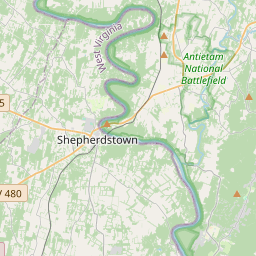1862 Antietam Campaign
Historical marker location:
48 East Patrick Street, Frederick, Maryland
( Marker is on East Patrick Street (State Highway 144), on the left when traveling west.)







© OpenStreetMap contributors
Lee Invades Maryland
Loading...
Searching for other points of interest within 3 miles of this location.Maryland played a pivotal role in the American Revolution: Maryland was the site of several important battles during the American Revolution, including the Battle of Camden, the Battle of Cowpens, and the Battle of Yorktown. Additionally, Maryland's own soldiers played a crucial role in the war effort, including the famous "Maryland 400" who held off a British attack at the Battle of Long Island in 1776.
About Frederick County
Frederick County Timeline
Frederick County, Maryland has a rich and diverse history that dates back to the colonial era. Originally inhabited by Native American tribes, European settlers began arriving in the early 18th century. The county was formally established in 1748 and named after Frederick, Prince of Wales, the eldest son of King George II.
During the American Revolutionary War, Frederick County played a significant role. The county hosted several important events, including the signing of the Maryland Constitution in 1776. It also served as a crucial transportation hub, with the National Road passing through Frederick and connecting the east coast to the western frontier.
In the 19th century, Frederick County saw major advancements in transportation and industry. The Chesapeake and Ohio Canal and the Baltimore and Ohio Railroad were constructed, further enhancing the county's connectivity. Agricultural practices evolved, and new technologies were introduced to improve farming methods.
The 20th century saw Frederick County experience growth and development in various sectors. The county became an important hub for military and defense activities during World War II and the Cold War. Later, the expansion of educational institutions and healthcare facilities further strengthened the county's infrastructure. In recent years, Frederick County has experienced a population boom due to its proximity to Washington, D.C., and the availability of employment opportunities.
Today, Frederick County is a vibrant community with a mix of historic landmarks, cultural attractions, and a flourishing economy. It continues to be a center for agriculture, manufacturing, and services, while also embracing its rich history and natural beauty.
During the American Revolutionary War, Frederick County played a significant role. The county hosted several important events, including the signing of the Maryland Constitution in 1776. It also served as a crucial transportation hub, with the National Road passing through Frederick and connecting the east coast to the western frontier.
In the 19th century, Frederick County saw major advancements in transportation and industry. The Chesapeake and Ohio Canal and the Baltimore and Ohio Railroad were constructed, further enhancing the county's connectivity. Agricultural practices evolved, and new technologies were introduced to improve farming methods.
The 20th century saw Frederick County experience growth and development in various sectors. The county became an important hub for military and defense activities during World War II and the Cold War. Later, the expansion of educational institutions and healthcare facilities further strengthened the county's infrastructure. In recent years, Frederick County has experienced a population boom due to its proximity to Washington, D.C., and the availability of employment opportunities.
Today, Frederick County is a vibrant community with a mix of historic landmarks, cultural attractions, and a flourishing economy. It continues to be a center for agriculture, manufacturing, and services, while also embracing its rich history and natural beauty.
Frederick County Timeline
This timeline provides a glimpse into the major events and milestones that have shaped the history of Frederick County, Maryland.
- 1748: Frederick County, Maryland is established as one of the original counties in the state.
- 1774-1781: During the American Revolutionary War, Frederick County plays a significant role in supplying troops and provisions.
- 1820s: The Chesapeake and Ohio Canal is built, improving transportation and boosting economic growth in the county.
- 1861-1865: Frederick County is caught in the crossfire of the American Civil War, with both Union and Confederate armies occupying the area at different times.
- 1877: The Western Maryland Railroad is completed, further enhancing transportation and trade in Frederick County.
- 1902: Hood College, a private liberal arts college for women, is established in Frederick.
- 1920s-1930s: Frederick County experiences economic hardships due to the Great Depression, leading to increased government intervention and infrastructure development.
- 1950s-1970s: The county experiences significant population growth, thanks to the expansion of government agencies, military bases, and the thriving suburbanization of the Washington, D.C., metropolitan area.
- 2002: The September 11 attacks at the Pentagon impact Frederick County, as many residents commute to the Washington, D.C., area.